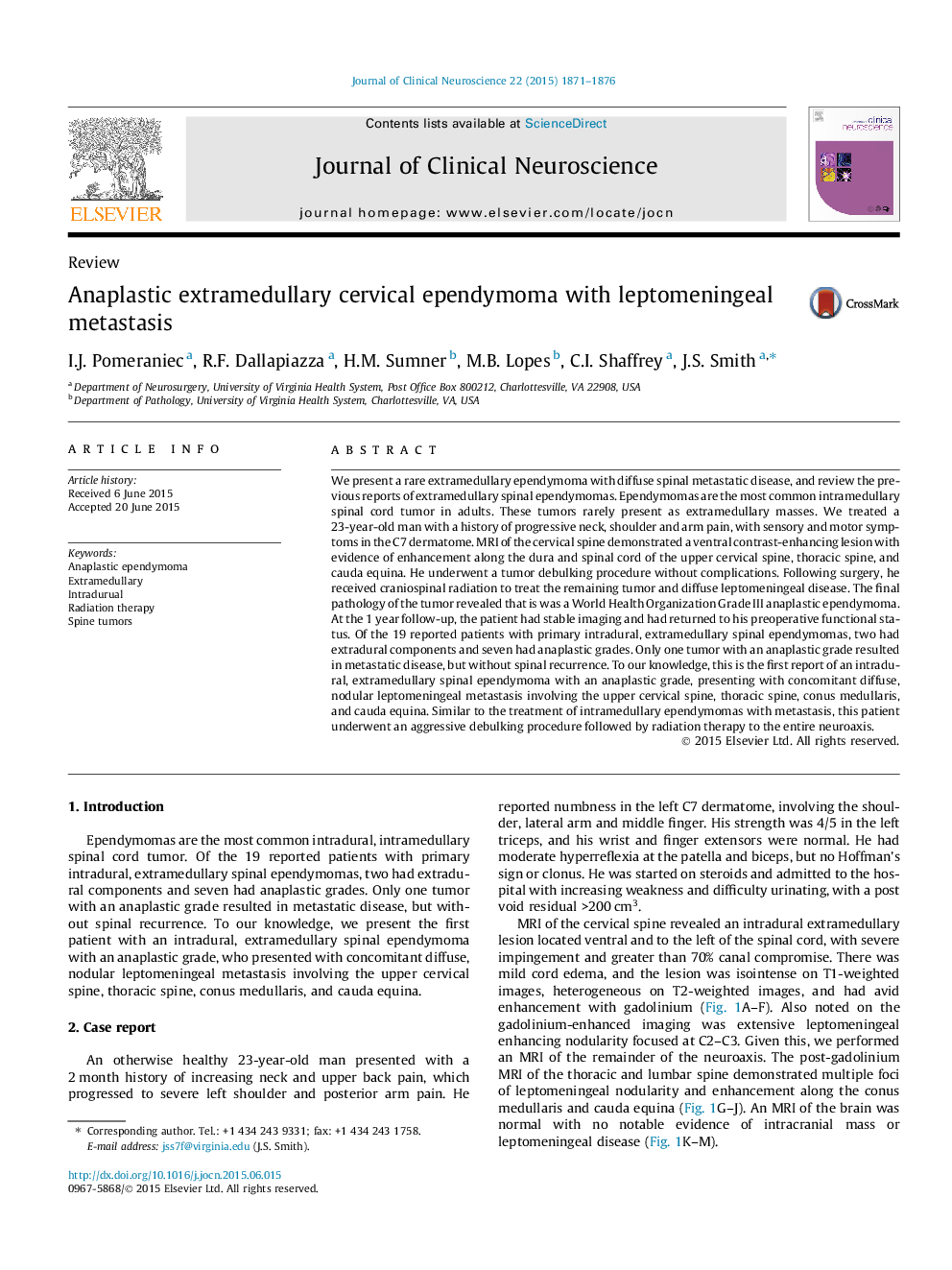| Article ID | Journal | Published Year | Pages | File Type |
|---|---|---|---|---|
| 3058691 | Journal of Clinical Neuroscience | 2015 | 6 Pages |
Abstract
We present a rare extramedullary ependymoma with diffuse spinal metastatic disease, and review the previous reports of extramedullary spinal ependymomas. Ependymomas are the most common intramedullary spinal cord tumor in adults. These tumors rarely present as extramedullary masses. We treated a 23-year-old man with a history of progressive neck, shoulder and arm pain, with sensory and motor symptoms in the C7 dermatome. MRI of the cervical spine demonstrated a ventral contrast-enhancing lesion with evidence of enhancement along the dura and spinal cord of the upper cervical spine, thoracic spine, and cauda equina. He underwent a tumor debulking procedure without complications. Following surgery, he received craniospinal radiation to treat the remaining tumor and diffuse leptomeningeal disease. The final pathology of the tumor revealed that is was a World Health Organization Grade III anaplastic ependymoma. At the 1Â year follow-up, the patient had stable imaging and had returned to his preoperative functional status. Of the 19 reported patients with primary intradural, extramedullary spinal ependymomas, two had extradural components and seven had anaplastic grades. Only one tumor with an anaplastic grade resulted in metastatic disease, but without spinal recurrence. To our knowledge, this is the first report of an intradural, extramedullary spinal ependymoma with an anaplastic grade, presenting with concomitant diffuse, nodular leptomeningeal metastasis involving the upper cervical spine, thoracic spine, conus medullaris, and cauda equina. Similar to the treatment of intramedullary ependymomas with metastasis, this patient underwent an aggressive debulking procedure followed by radiation therapy to the entire neuroaxis.
Related Topics
Life Sciences
Neuroscience
Neurology
Authors
I.J. Pomeraniec, R.F. Dallapiazza, H.M. Sumner, M.B. Lopes, C.I. Shaffrey, J.S. Smith,
